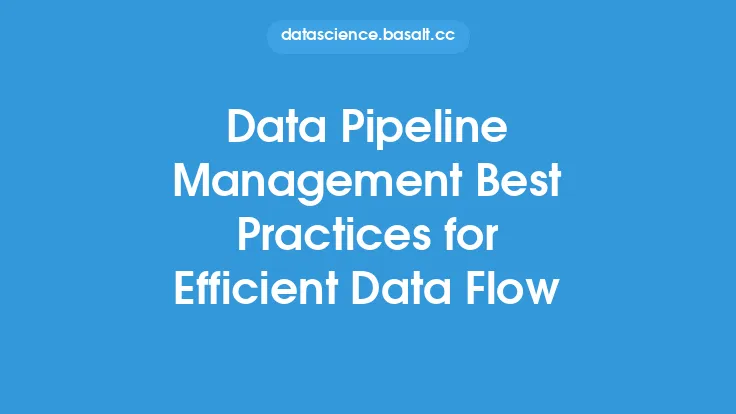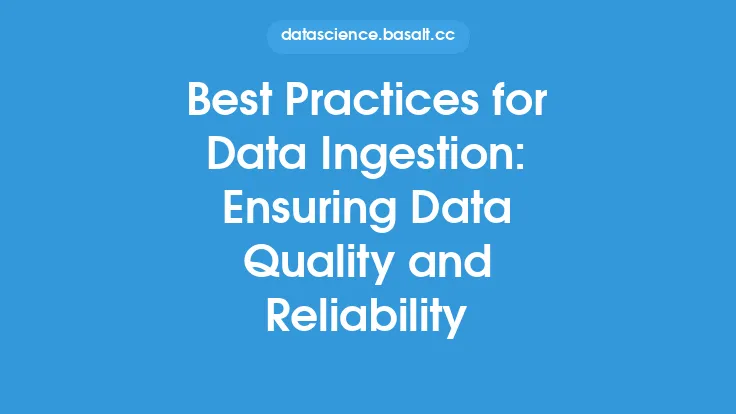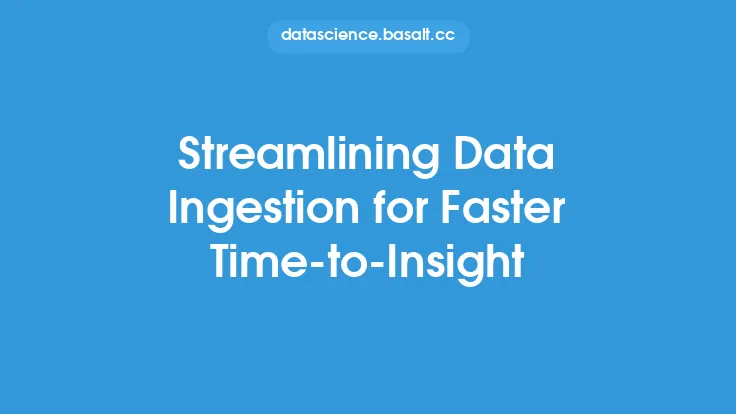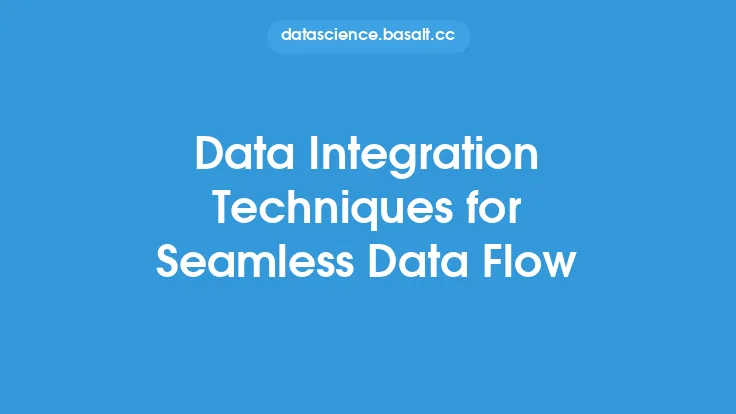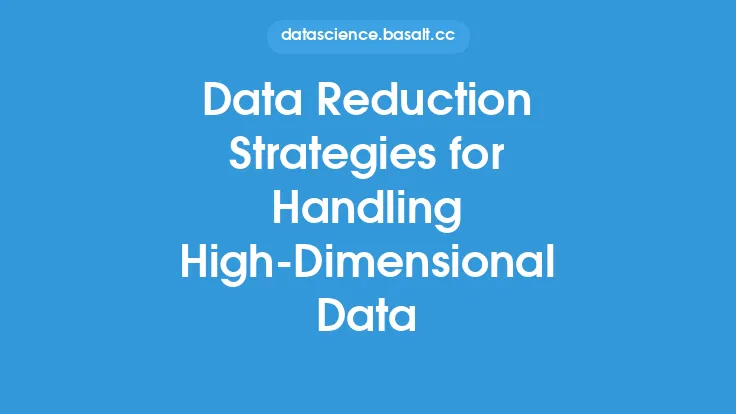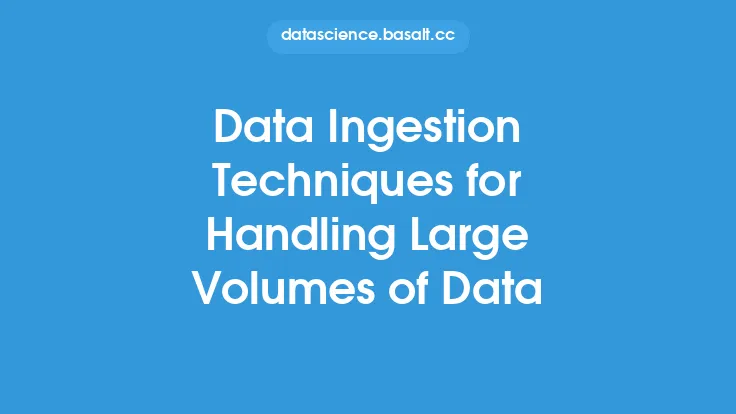Data ingestion is a critical component of the data engineering process, as it enables organizations to collect, process, and analyze large volumes of data from various sources. The goal of data ingestion is to provide a steady flow of data into a system, where it can be transformed, stored, and analyzed to extract valuable insights. In this article, we will delve into the different data ingestion strategies that can be employed to ensure efficient data flow.
Introduction to Data Ingestion Strategies
Data ingestion strategies are designed to optimize the process of collecting, processing, and storing data. These strategies take into account the type and volume of data, the frequency of data arrival, and the requirements of the downstream systems that will be using the data. A well-designed data ingestion strategy can help organizations to reduce costs, improve data quality, and increase the speed of data processing. There are several data ingestion strategies that can be employed, including batch processing, real-time processing, and micro-batch processing. Each of these strategies has its own advantages and disadvantages, and the choice of strategy depends on the specific requirements of the organization.
Batch Processing Strategy
Batch processing is a data ingestion strategy that involves collecting data in batches and processing it in bulk. This strategy is suitable for organizations that have large volumes of data that arrive at regular intervals. Batch processing can be used to process data from various sources, such as log files, databases, and files. The batch processing strategy involves several steps, including data collection, data processing, and data storage. Data collection involves gathering data from various sources and storing it in a temporary location. Data processing involves transforming and formatting the data into a suitable format for analysis. Data storage involves storing the processed data in a database or data warehouse.
Real-Time Processing Strategy
Real-time processing is a data ingestion strategy that involves processing data as it arrives. This strategy is suitable for organizations that require immediate insights from their data. Real-time processing can be used to process data from various sources, such as social media, sensors, and applications. The real-time processing strategy involves several steps, including data collection, data processing, and data storage. Data collection involves gathering data from various sources and streaming it into a processing system. Data processing involves transforming and formatting the data into a suitable format for analysis. Data storage involves storing the processed data in a database or data warehouse.
Micro-Batch Processing Strategy
Micro-batch processing is a data ingestion strategy that involves processing data in small batches at regular intervals. This strategy is suitable for organizations that require fast data processing and low latency. Micro-batch processing can be used to process data from various sources, such as log files, databases, and files. The micro-batch processing strategy involves several steps, including data collection, data processing, and data storage. Data collection involves gathering data from various sources and storing it in a temporary location. Data processing involves transforming and formatting the data into a suitable format for analysis. Data storage involves storing the processed data in a database or data warehouse.
Data Ingestion Tools and Technologies
There are several data ingestion tools and technologies that can be used to implement the different data ingestion strategies. These tools and technologies include Apache Kafka, Apache Flume, Apache NiFi, and AWS Kinesis. Apache Kafka is a distributed streaming platform that can be used to process data in real-time. Apache Flume is a distributed, reliable, and available system for efficiently collecting, aggregating, and moving large amounts of data. Apache NiFi is a data integration tool that can be used to process and distribute data across multiple systems. AWS Kinesis is a fully managed service that can be used to process and analyze real-time data.
Data Ingestion Architecture
A data ingestion architecture is a framework that outlines the components and processes involved in data ingestion. A typical data ingestion architecture includes several components, including data sources, data ingestion tools, data processing engines, and data storage systems. Data sources are the systems that generate the data, such as applications, databases, and files. Data ingestion tools are the systems that collect and process the data, such as Apache Kafka and Apache Flume. Data processing engines are the systems that transform and format the data, such as Apache Spark and Apache Flink. Data storage systems are the systems that store the processed data, such as databases and data warehouses.
Best Practices for Data Ingestion
There are several best practices that can be followed to ensure efficient data ingestion. These best practices include designing a scalable architecture, implementing data validation and quality checks, using data ingestion tools and technologies, and monitoring and optimizing data ingestion processes. Designing a scalable architecture involves ensuring that the data ingestion system can handle large volumes of data and scale up or down as needed. Implementing data validation and quality checks involves ensuring that the data is accurate and complete before it is processed and stored. Using data ingestion tools and technologies involves selecting the right tools and technologies for the specific use case. Monitoring and optimizing data ingestion processes involves tracking the performance of the data ingestion system and making adjustments as needed.
Conclusion
In conclusion, data ingestion is a critical component of the data engineering process, and there are several data ingestion strategies that can be employed to ensure efficient data flow. The choice of data ingestion strategy depends on the specific requirements of the organization, including the type and volume of data, the frequency of data arrival, and the requirements of the downstream systems. By following best practices and using the right data ingestion tools and technologies, organizations can ensure that their data ingestion system is scalable, efficient, and reliable.
